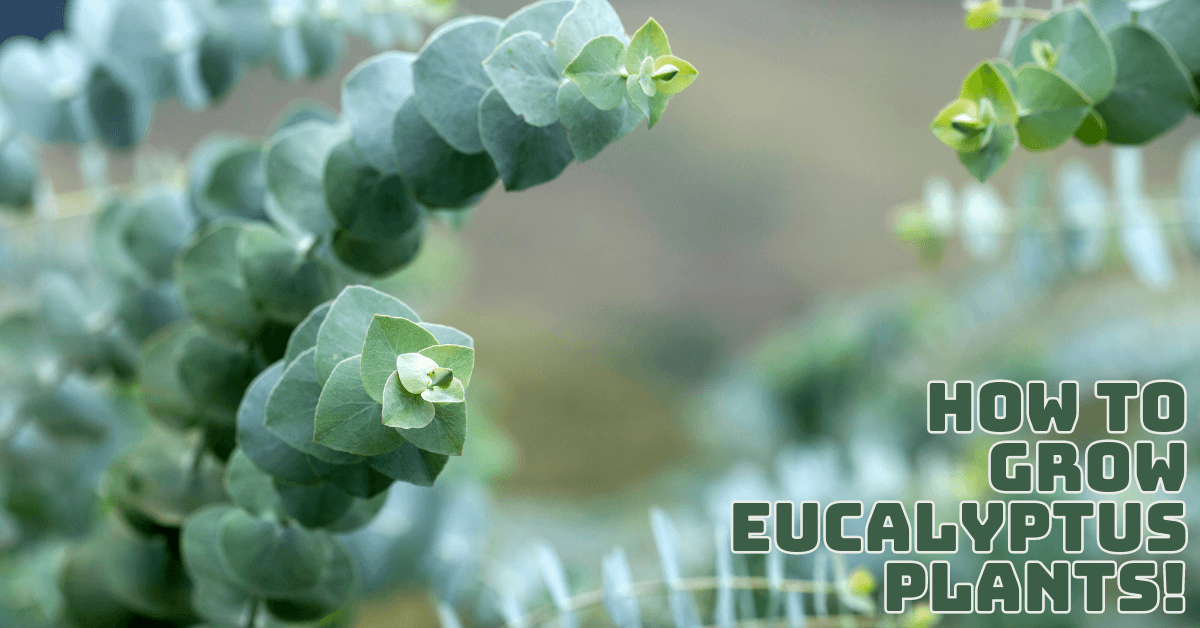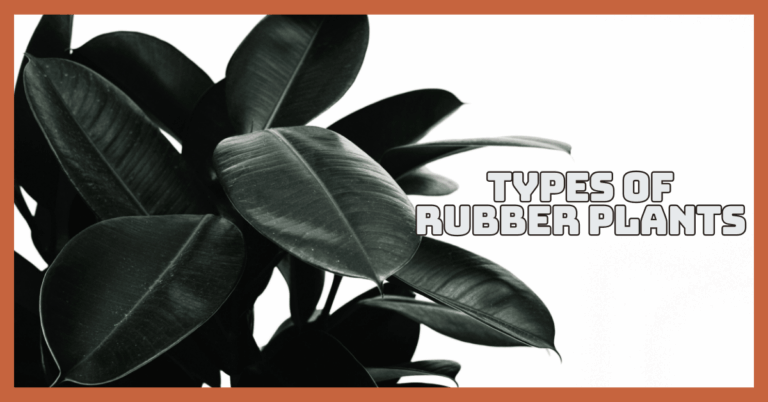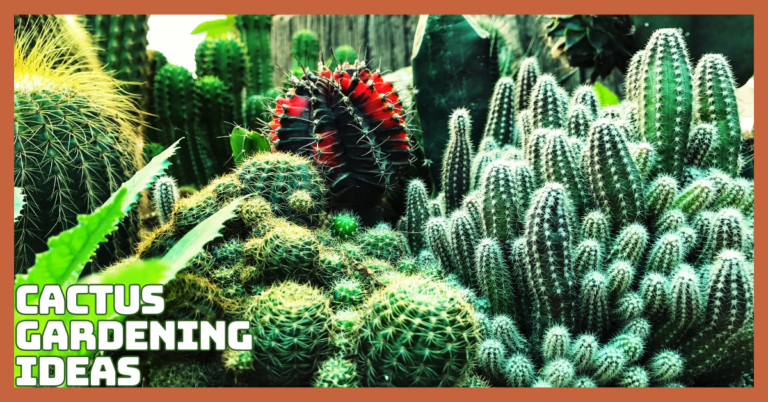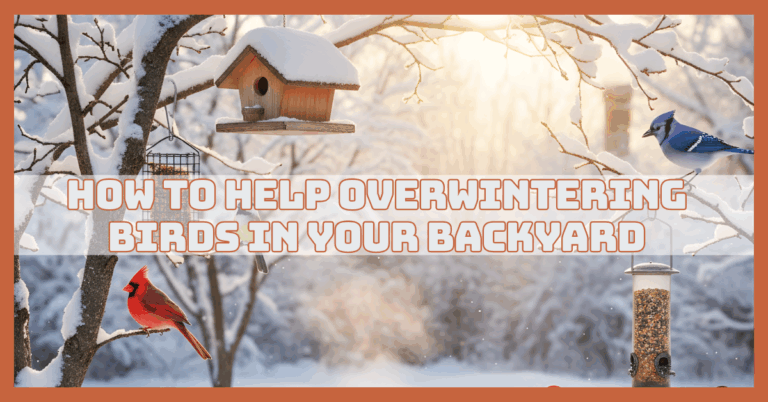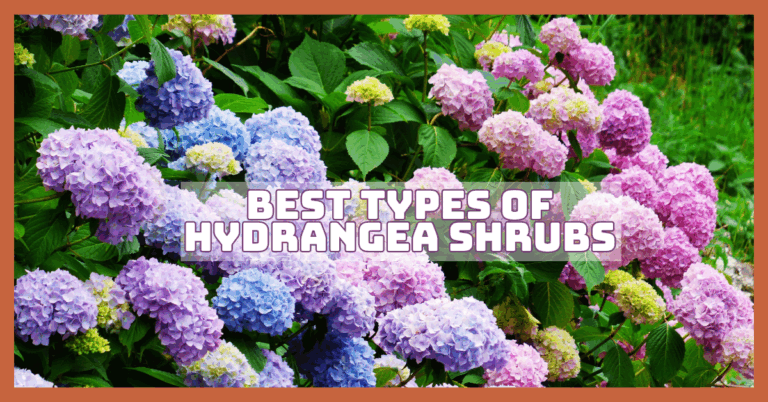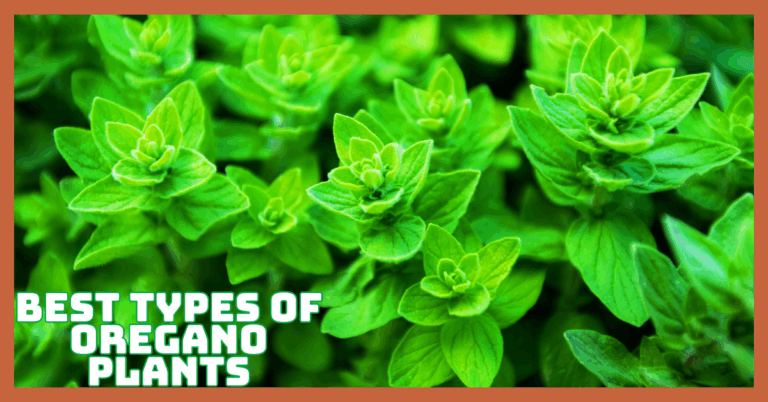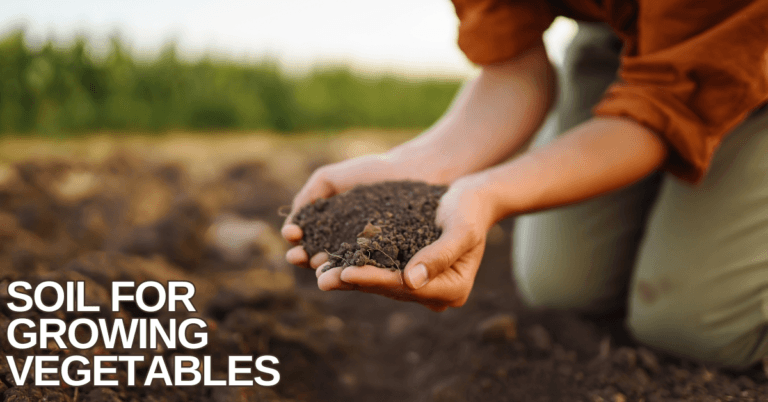How To Grow Eucalyptus Plants
How To Grow Eucalyptus Plants
Growing eucalyptus plants can be a rewarding experience, whether you’re looking to add a touch of the Australian landscape to your garden or seeking the plant’s aromatic leaves for various uses.
Learning how to grow eucalyptus plants will ensure they thrive in your environment. Eucalyptus trees are prized for their quick growth, unusual silver-blue leaves, and adaptability to various climates.
This article will walk you through properly cultivating and caring for eucalyptus plants, from selecting the appropriate species to planting, watering, and pruning for maximum growth.
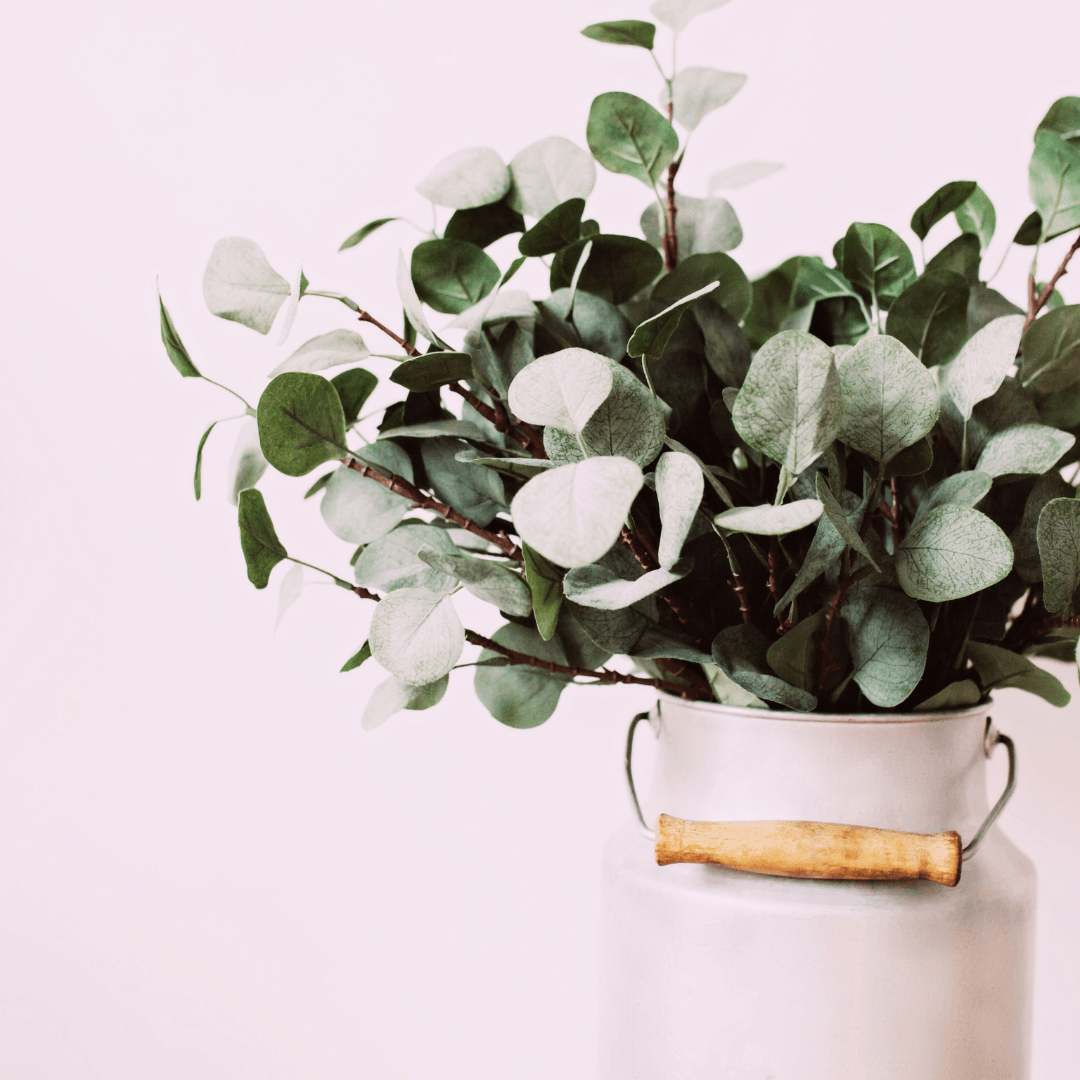
Types Of Eucalyptus Plant
Eucalyptus plants are diverse and come in many types, each with its own unique characteristics. Here are some common types of eucalyptus plants:
1. Eucalyptus globulus (Blue Gum)
Known for its tall stature and smooth bark, Blue Gum is commonly used for timber and essential oil production. Its silver-blue leaves are aromatic.
2. Eucalyptus citriodora (Lemon-scented Gum)
This species is prized for its lemon-scented leaves. It’s often grown for ornamental purposes and to produce lemon eucalyptus oil, which is popular as a natural insect repellent.
3. Eucalyptus cinerea (Silver Dollar Gum)
Silver Dollar Gum is known for its round, silvery-blue leaves, often used in floral arrangements. It’s a smaller species, making it suitable for gardens and pots.
4. Eucalyptus polyanthemos (Red Box)
With rounded leaves and attractive bark, Red Box is popular for its ornamental value and is also a good choice for landscaping in arid regions.
5. Eucalyptus gunnii (Cider Gum)
Cider Gum is a hardy species that can tolerate cold climates. Its attractive, rounded juvenile leaves are often used in floristry.
6. Eucalyptus pauciflora (Snow Gum)
Snow Gum is a cold-tolerant species found in alpine regions. It’s known for its striking bark and ability to withstand harsh conditions.
7. Eucalyptus radiata (Narrow-leaved Peppermint)
This species produces a strong peppermint scent and is commonly used for essential oils. It has narrow, lance-shaped leaves and is medium in size.
8. Eucalyptus deglupta (Rainbow Eucalyptus)
Rainbow Eucalyptus is unique for its multicoloured bark, which peels away to reveal bright green, red, orange, and purple streaks. This tropical species is often grown for ornamental purposes.
9. Eucalyptus camaldulensis (River Red Gum)
River Red Gum is widely planted for shade and wood production because it is resilient and can thrive in various environments. It has a distinctive, sprawling growth habit.
10. Eucalyptus robusta (Swamp Mahogany)
This species is adapted to wet environments and is often found in swamps and coastal areas. It has thick, leathery leaves and is valued for timber and ornamental use.
How To Grow Eucalyptus Plants
Growing eucalyptus plants can be a rewarding experience, especially if you want to add a touch of the Australian landscape to your garden. Here is a step-by-step guide on growing eucalyptus plants successfully:
1. Choose The Right Eucalyptus Species
Choosing the right eucalyptus species is crucial for ensuring successful growth and long-term health. Eucalyptus plants vary significantly in size, growth habits, and environmental preferences, so selecting a species that suits your climate and available space is important.
Eucalyptus globulus, commonly known as Blue Gum, is an excellent choice for larger gardens or landscapes. This species is known for its rapid growth and towering height, making it ideal for creating shade or a windbreak. However, it requires ample space and is best suited to mild, frost-free climates.
If you’re looking for a smaller tree with aromatic foliage, consider Eucalyptus citriodora, also known as Lemon-scented Gum. This species is prized for its fragrant leaves, which release a refreshing lemony scent. It’s well-suited to warmer climates and can be grown in gardens or large containers.
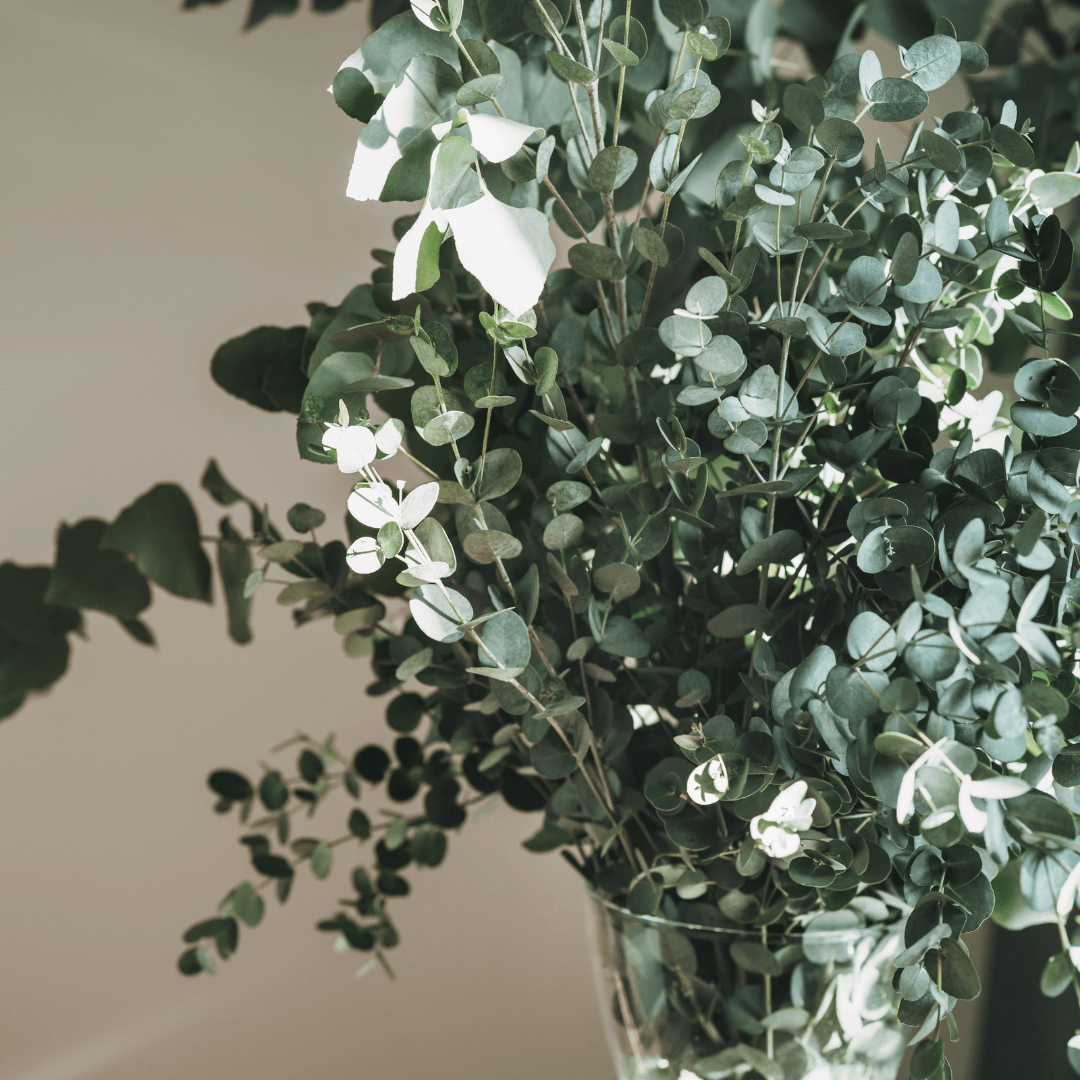
2. Select A Location To Grow Eucalyptus Plants
Choose a place that receives at least six hours of direct sunlight daily to encourage your eucalyptus plant's rapid development and brilliant foliage.
Since eucalyptus trees like full sun, pick a spot with at least six hours of sunshine daily. This ensures the plant gets enough light to support its rapid growth and vibrant foliage.
Equally important is well-draining soil. Eucalyptus plants are susceptible to root rot in soggy conditions, so make sure the soil allows water to drain away quickly. If the soil has a lot of clay or drains badly, plant your eucalyptus in a raised bed or on a small mound.
Good air circulation is also vital for eucalyptus health. It helps prevent fungal diseases and keeps the tree’s foliage dry. Finally, ensure ample space for the tree’s mature size, as eucalyptus trees can grow large and need room to spread above and below ground.

3. Soil Preparation To Grow Eucalyptus Plants
Proper soil preparation is key to growing healthy eucalyptus plants. Eucalyptus trees thrive in soil with a slightly acidic to neutral pH, ideally between 5.5 and 7.0. Add organic matter, such as compost or well-rotted manure to achieve the best soil conditions.
This helps improve soil structure, enhance drainage, and increase fertility, which is crucial for eucalyptus's fast growth and robust health.
Use a well-draining potting mix designed for trees or shrubs for container gardening. Look for mixes that include perlite or coarse sand, which promote aeration and prevent water from pooling at the bottom of the pot.
Avoid heavy, clayey soils that retain too much moisture, as eucalyptus roots are sensitive to waterlogging. By correctly preparing the soil, you can build a favourable atmosphere for your eucalyptus plant to grow and thrive.
4. Planting Eucalyptus Plants
Proper seed-starting techniques and sapling planting techniques are crucial for successfully establishing eucalyptus.
If growing from seeds, start them indoors 10-12 weeks before the last frost. Sow the seeds on the surface of a well-draining seed-starting mix and lightly press them in without covering.
Keep the soil damp, but don't water it too much. Too much moisture will cause seeds to rot. Seedlings can be moved outside once they are about 6 inches tall. The first stage in preparing saplings is to dig a hole twice as deep and wide as the root ball.
This provides the roots with abundant space to expand and establish themselves. Place the sapling in the center of the hole, ensuring it is at the same depth as it was in its container.
To remove any air pockets and aid in the plant's settling, backfill the hole with dirt, gently compact it and then water it well. This process ensures a strong start for your eucalyptus in its new environment.
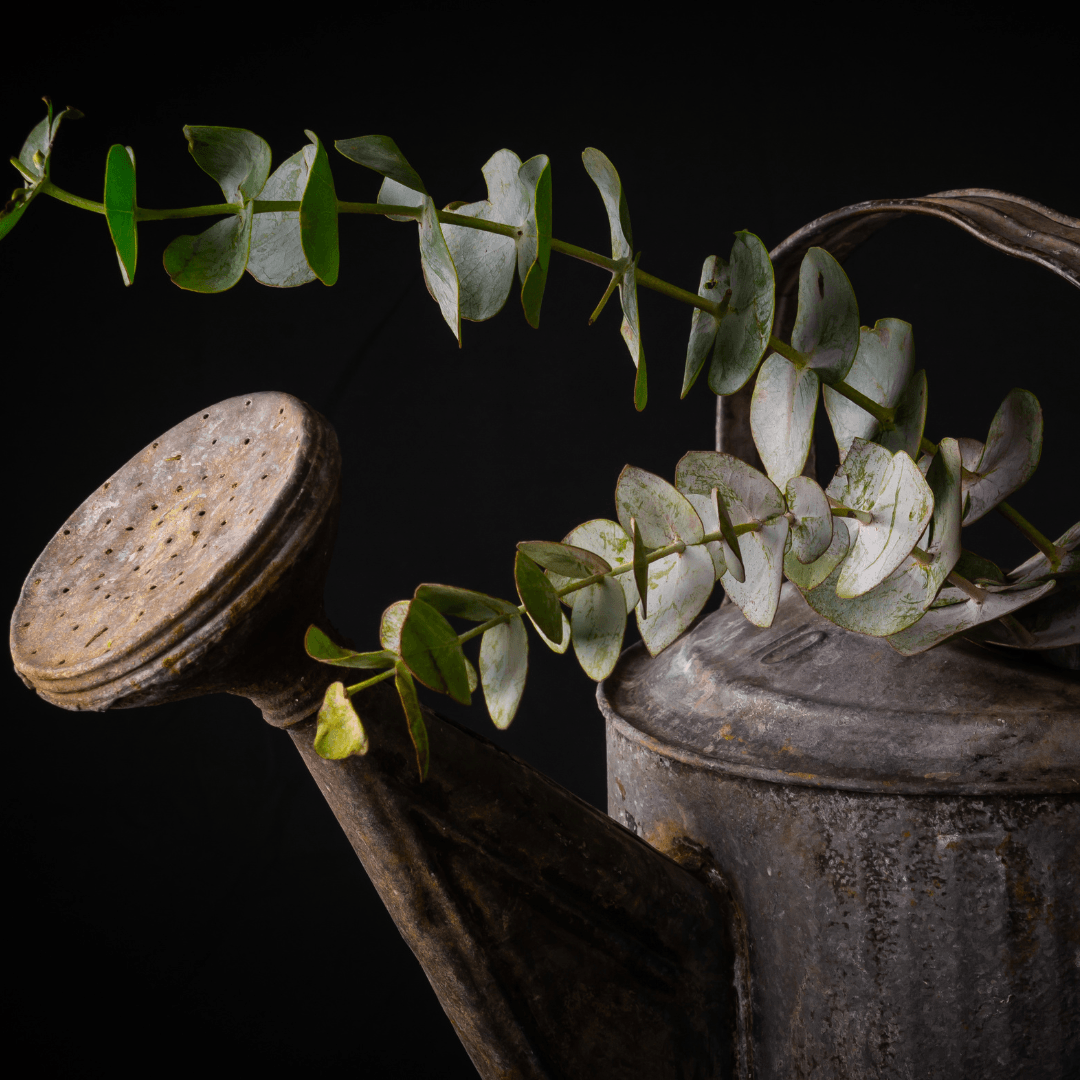
5. Watering Eucalyptus Plants
Watering eucalyptus plants correctly is crucial for their healthy development. During the first year after planting, water eucalyptus regularly to help the plant establish a robust root system. This initial period is critical as it allows the roots to grow deeply and anchor the plant firmly in the soil.
Once established, eucalyptus plants are notably drought-tolerant and require less frequent watering. They have adapted to survive in conditions with limited water, making them well-suited for regions with variable rainfall.
When watering, apply water deeply to ensure it reaches the root zone. This strengthens the plant's roots deeply and makes it more resilient to dry spells. Still, because eucalyptus plants suffer from root rot when the soil is always wet, it's critical to let the soil dry out between waterings.
Monitoring soil moisture and adjusting watering practices based on weather conditions will promote a healthy, resilient eucalyptus plant.
6. Mulching Of Eucalyptus Plants
Mulching is essential for eucalyptus plants, offering multiple benefits for their health and growth. When learning how to grow eucalyptus plants, mulching is critical as it helps retain soil moisture and reduces the need for frequent watering, especially during hot, dry periods. This is particularly valuable during hot, dry periods when eucalyptus trees need consistent moisture to thrive.
Mulch also acts as a barrier to suppress weeds, preventing them from competing with your eucalyptus for nutrients and water.
Eliminating weeds allows the plant to concentrate its energy on expanding and maturing. Additionally, mulch helps regulate soil temperature, keeping the root zone cooler in the summer and warmer in the winter. This temperature regulation supports healthy root development.
7. Pruning Eucalyptus Plants
Pruning eucalyptus plants is essential for maintaining their shape, health, and appearance. Regular pruning helps manage the tree’s size and encourages a more attractive, bushier growth habit. Cut off dead, broken, or diseased branches to strengthen the tree and stop the spread of illness.
Pruning also helps to prevent the eucalyptus from becoming too tall or leggy, which can be especially important in smaller gardens or landscapes.
Cutting back the top growth encourages the plant to put more energy into lateral branches, leading to a fuller, more compact form.
Additionally, regular pruning can help remove weak or crossing branches that might affect the tree’s structure or aesthetic appeal. RP pruning tools and cuts at a modest slant to expedite recovery and reduce the danger of infection. Pruning keeps your eucalyptus looking its best and supports its long-term vitality.
8. Pests And Diseases Of Eucalyptus Plants
Eucalyptus plants are known for their resilience and are generally resistant to pests and diseases.
However, they are not entirely immune, and vigilance is required to maintain their health. Common issues to watch include leaf spots caused by fungal infections, which may appear as discoloured or dead patches on the leaves.
Root rot is another concern. It often results from poor drainage or overwatering and can lead to wilting and yellowing of leaves.
Pests such as aphids may occasionally infest eucalyptus plants. They feed on the sap and cause leaf distortion or a sticky residue known as honeydew. To manage these problems, regularly inspect your plants and promptly address any issues.
Improve air circulation and ensure proper watering practices for leaf spots and root rot. Treat pests like aphids with insecticidal soap or neem oil. Timely intervention helps keep your eucalyptus healthy and thriving.

9. Fertilizing Of Eucalyptus Plants
When exploring how to grow eucalyptus plants, it's important to note that while they generally don't require extensive fertilization, a balanced, slow-release fertilizer can support healthy growth in nutrient-poor soils.
They are well-suited to nutrient-poor soils, as their natural habitat often includes less fertile ground. However, a balanced, slow-release fertilizer can support healthy growth if you have poor or depleted soil.
Fertilize eucalyptus in the spring to boost the plant as it enters its active growing season. A balanced fertilizer, such as a 10-10-10 or 14-14-14 blend, provides equal proportions of nitrogen, phosphorus, and potassium, which supports overall plant health, root development, and foliage growth.
Avoid overfertilizing, which might result in strong, rapid growth and heightened vulnerability to illnesses and pests.
Always follow the manufacturer’s recommendations for application rates and avoid applying fertilizer directly to the plant’s base to prevent potential damage. Proper fertilization helps ensure your eucalyptus remains strong and vibrant.
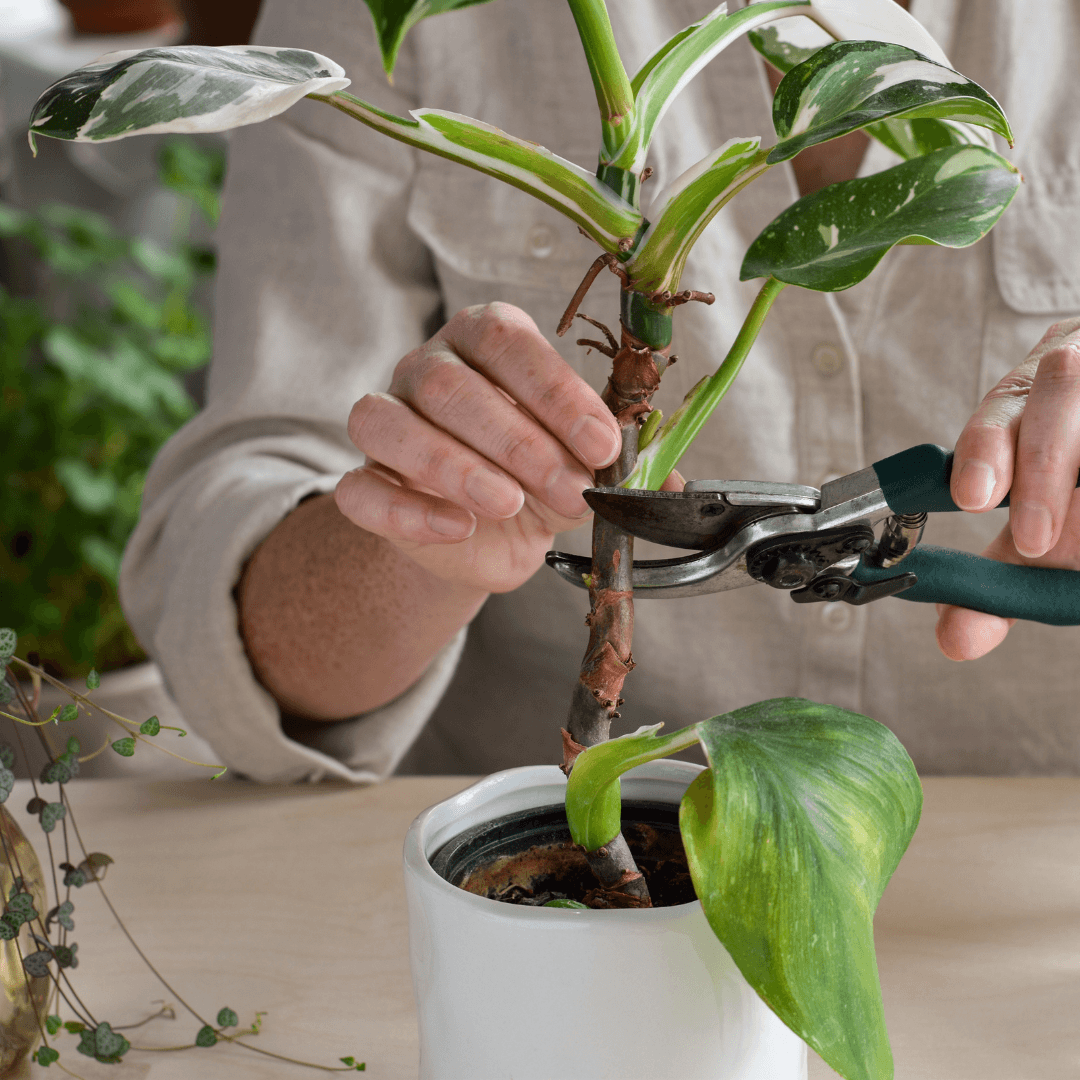
10. Propagation Of Eucalyptus Plants
Seed Propagation
Start by sowing eucalyptus seeds in a tray with a well-draining seed mix. Don't cover the seeds. Gently press them into the soil's surface.
Place the tray in a warm area with indirect light and ensure the soil is moist during germination, which may take several weeks.
Keep the tray covered with a dome or clear plastic wrap to preserve high humidity and give the appearance of a mini-green house.
Cuttings
Take semi-hardwood cuttings from mature eucalyptus plants in late summer for faster propagation. Select healthy stems about 4-6 inches long and remove the lower leaves. Soak the cut end in rooting hormone to encourage the formation of roots.
Plant the cuttings in a pot with a perlite and peat mixture that drains properly. Until the roots take hold, keep the cuttings in a warm, humid location and moisten the soil.
11. Harvesting Eucalyptus
Understanding how to grow eucalyptus plants allows you to harvest versatile leaves, which can be used in crafts and for extracting essential oils with therapeutic benefits.
To harvest, choose clean, healthy leaves from mature trees. Leaves can be dried and used in crafts, such as wreaths or decorative arrangements, and are also valued for their aromatic qualities.
Essential oils extracted from eucalyptus leaves are popular for their refreshing scent and therapeutic properties, including respiratory and antiseptic benefits.
The wood of larger eucalyptus trees is highly valued for its durability and aesthetic appeal. It can be used for making furniture, flooring, and decorative items.
Eucalyptus wood is also used in construction due to its strength and resistance to pests. To support sustainable practices, ensure you know and abide by local laws about removing trees and using wood before harvesting.
Tips For Growing Eucalyptus Plants
Here are some helpful tips for growing eucalyptus plants successfully:
1. Incorporate Companion Plants
Pair eucalyptus with other drought-tolerant or low-maintenance plants. For example, lavender or rosemary can thrive alongside eucalyptus, creating a harmonious garden that benefits from similar water and sunlight needs.
2. Experiment With Soil Enhancements
Try adding biochar to your soil mix. Biochar improves soil fertility and water retention while enhancing the growth environment for eucalyptus.
3. Use Rainwater
Collect and use rainwater to water eucalyptus plants. This environmentally friendly method provides your plants with natural, untreated water, which can benefit their health.
4. Install A Drip Irrigation System
Consider installing a drip irrigation system for precise watering and conserving water. This ensures that eucalyptus receives adequate moisture without the risk of waterlogging.
5. Create A Microclimate
If the plant grows in a cooler climate, use reflective materials like white stones or light-coloured mulch around it to create a microclimate that retains warmth and promotes growth.
6. Add A Windbreak
When learning how to grow eucalyptus plants, adding a natural windbreak of shrubs or small trees can help protect young plants from wind damage and create a more stable growing environment. This helps protect young plants from wind damage and creates a more stable growing environment.
7. Incorporate Eucalyptus In Natural Pest Control
You can use eucalyptus oil or leaves as a natural insect deterrent. Placing eucalyptus leaves around your garden or using diluted eucalyptus oil can help deter pests without chemicals.
8. Utilize Eucalyptus Cuttings
Instead of always starting from seeds, try propagating Eucalyptus from cuttings. This can be a quicker way to grow new plants and ensures that you’re replicating the characteristics of a parent plant you like.
9. Enhance Aesthetics With Art
Incorporate artistic elements such as decorative plant markers or garden sculptures that complement your eucalyptus. This will add a unique visual appeal to your garden and highlight the beauty of your eucalyptus plants.
With a little effort and these pointers, you can create a unique and flourishing eucalyptus practical and visually striking garden.
Benefits And Uses Of Eucalyptus
1. Benefits Of Eucalyptus In The Shower
Hanging eucalyptus in your shower can create a spa-like experience. The steam releases the plant’s essential oils, which help clear sinuses, ease respiratory issues, and provide a calming, aromatic atmosphere.
2. Benefits Of Eucalyptus Honey
Eucalyptus honey is known for its antibacterial and antioxidant properties. It can help soothe sore throats, improve digestive health, and boost the immune system. It also has a rich, distinct flavour for culinary uses.
3. Benefits Of Eucalyptus Soap
Eucalyptus soap provides a refreshing and invigorating cleanse thanks to its natural antiseptic properties. It can help clear skin conditions, reduce body odour, and provide a cooling sensation that is particularly soothing for sore muscles.
4. Benefits Of Eucalyptus Candle
Eucalyptus candles can purify the air and create a relaxing ambiance. The scent helps reduce stress, clear nasal congestion, and even repel insects, making them ideal for indoor and outdoor use.
5. Benefits Of Eucalyptus For Hair
Eucalyptus can improve scalp health by reducing dandruff and soothing irritation. It can give hair a natural sheen and encourage blood circulation in the scalp, aiding hair growth.
6. Uses Of Eucalyptus Oil For Skin
Eucalyptus oil is beneficial for treating skin issues like acne, wounds, and bug bites because of its antibacterial and anti-inflammatory qualities. It can also be added to skincare products for a refreshing scent and to help soothe irritated skin.
7. Uses Of Eucalyptus Oil For Hair
Eucalyptus oil promotes a healthy scalp by reducing dandruff and itchiness. To encourage hair follicle stimulation and development, dilute it with a carrier oil and massage it into the scalp. It can also be added to shampoos.
8. Uses Of Eucalyptus Wood
Eucalyptus wood is durable and resistant to decay, making it suitable for furniture, flooring, and outdoor structures. It’s also used for firewood due to its high heat output and pleasant aroma when burned.
Conclusion
Learning to grow eucalyptus plants can be enjoyable and rewarding. By providing the right conditions—well-drained soil, plenty of sunlight, and a proper watering routine—you'll have a thriving eucalyptus plant that adds beauty and fragrance to your garden.
Understanding how to grow eucalyptus plants will ensure success, whether in a pot or directly in the ground. Start your eucalyptus journey today and enjoy this versatile plant's many benefits!
I trust you enjoyed this article on How To Grow Eucalyptus Plants. Please stay tuned for more blog posts soon. Take care!
JeannetteZ
>>>Please click here to read my all-inclusive article, About The Essential Companion Planting Guide<<<
>>>Please click here to read my all-inclusive article about Container Gardening<<<
>>>Are you interested in homegrown herbs and medicine? Please click here to find out more about it!<<<
Your Opinion Is Important To Me
Do you have thoughts, ideas, or questions? I would love to hear from you. Please leave me your questions, experiences, and remarks about this article, How To Grow Eucalyptus Plants, in the comments section below. You can also email me at Jeannette@Close-To-Nature.org.
Disclosure
This post may contain affiliate links. As an Amazon Associate and other affiliate programs, I earn from qualifying purchases at no extra cost to you. Please read my full affiliate disclosure.
You might also enjoy these blog posts:
Simple Ways To Practice Mindfulness
Guide To Flower Diseases Prevention And Treatment
Common Vegetable Diseases In Your Garden

